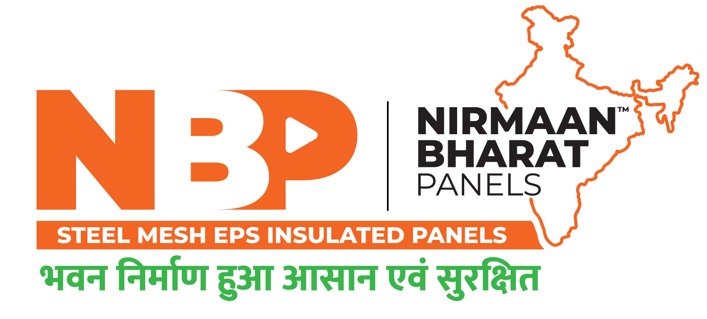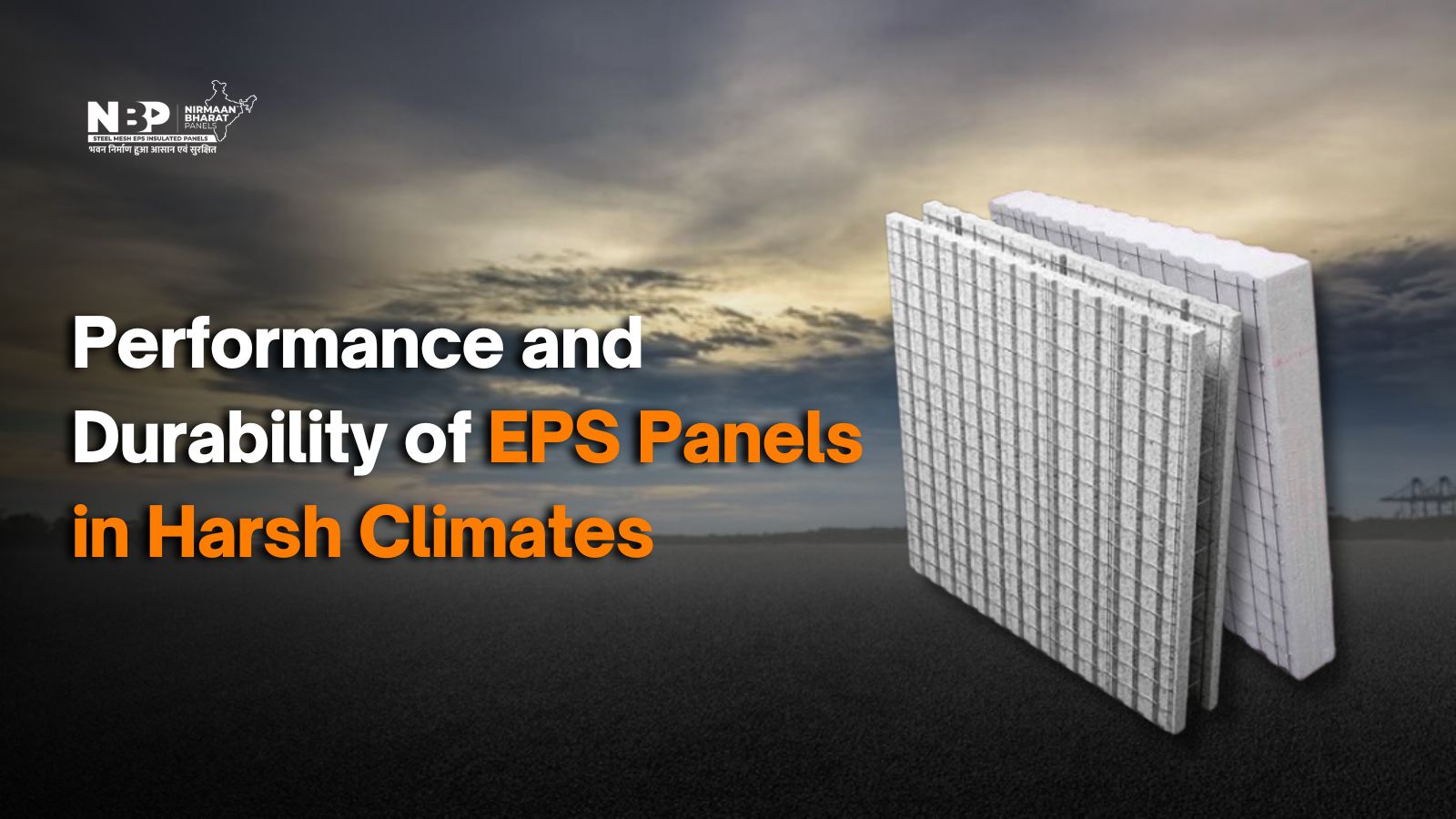In the quest for sustainable and cost-effective construction materials, Expanded Polystyrene (EPS) panels have emerged as a revolutionary solution. Lightweight, durable, and thermally efficient, EPS panels are increasingly being used across a range of applications, from residential housing to commercial structures. However, one critical consideration for any building material is its ability to withstand extreme climatic conditions. This blog explores the performance and durability of EPS panels in harsh climates, focusing on how they maintain structural integrity, thermal efficiency, and longevity.
Table of Contents
ToggleWhat Are EPS Panels?
Expanded Polystyrene (EPS) panels are sandwich panels composed of a rigid core of EPS foam enclosed between two layers of structural boards, often steel or fibre cement. These panels are known for their high insulation properties, low weight, and ease of installation. Their structural strength and energy efficiency make them an ideal choice for modern construction, particularly in areas prone to Harsh climates.
Performance of EPS Panels in Harsh Climates
1. Thermal Insulation
EPS panels excel in thermal insulation, providing a stable internal environment regardless of external temperature extremes.
- Cold Climates: EPS panels have a low thermal conductivity, which reduces heat transfer. This makes them ideal for use in freezing temperatures, as they minimize heat loss and reduce the energy required for heating. Studies have shown that structures made with EPS panels can achieve up to 50% energy savings in cold climates.
- Hot Climates: In scorching conditions, EPS panels block external heat from penetrating the building, keeping interiors cool. The closed-cell structure of EPS ensures that it remains an effective barrier against heat, even in temperatures exceeding 40°C.
2. Moisture Resistance
One of the biggest challenges in Harsh climates is moisture infiltration, which can compromise structural integrity. EPS panels resist water absorption due to their closed-cell structure. In humid environments or regions with heavy rainfall, this property prevents the growth of mold, mildew, and rot, ensuring a healthy and durable building envelope.
3. Wind and Storm Resistance
Extreme climates are often accompanied by strong winds and storms. EPS panels are designed to withstand high wind loads, making them suitable for cyclone-prone areas. When properly installed and reinforced, EPS panel systems can endure wind speeds of up to 200 km/h, depending on the construction specifications.
4. Seismic Performance
In earthquake-prone areas, lightweight building materials are preferred to reduce structural loads and enhance safety. EPS panels, due to their low weight and flexibility, can absorb seismic energy effectively. Structures built with EPS panels exhibit reduced cracking and better stability during earthquakes.
5. Fire Resistance
Modern EPS panels are manufactured with fire-retardant additives, enhancing their safety profile. In Harsh climates where wildfires are a concern, EPS panels with flame-resistant coatings can delay fire spread and provide additional protection. When subjected to fire, they release minimal toxic fumes compared to traditional materials.
Durability of EPS Panels in Harsh Environments
EPS panels are engineered to be durable and long-lasting, even under extreme climatic conditions. Here’s how they hold up over time:
1. Resistance to Temperature Fluctuations
Frequent temperature changes can cause building materials to expand and contract, leading to cracking and degradation. EPS panels, however, exhibit excellent dimensional stability, maintaining their form and performance over years of use.
2. Longevity
The materials used in EPS panels are resistant to biological degradation and chemical reactions. This ensures that the panels do not corrode, rust, or deteriorate, even in saline or acidic environments, such as coastal regions or industrial areas.
3. UV Resistance
Exposure to direct sunlight in desert climates can degrade some materials over time. With the proper UV-protective coatings, EPS panels retain their structural integrity and appearance despite prolonged sun exposure.
4. Minimal Maintenance Requirements
Compared to traditional materials like brick and mortar, EPS panels require minimal maintenance. Their resistance to cracking, warping, and biological infestations translates into lower long-term costs for repairs and upkeep.
Sustainability of EPS Panels in Extreme Climates
In addition to their durability and performance, EPS panels align with global sustainability goals. They reduce construction waste, improve energy efficiency, and are often recyclable. Using EPS panels in extreme climates not only ensures durability but also contributes to reducing the carbon footprint of buildings.
1. Energy Efficiency
EPS panels contribute to significant energy savings by maintaining stable indoor temperatures. This reduces reliance on heating and cooling systems, cutting down on energy consumption and greenhouse gas emissions.
2. Recyclability
EPS is a recyclable material, making it a sustainable choice for eco-conscious builders. Recycled EPS can be repurposed into new panels or used in other applications, promoting a circular economy.
3. Reduced Construction Waste
Since EPS panels are prefabricated, they minimize on-site waste during construction. Their precision and ease of installation further streamline the building process.
Applications of EPS Panels in Extreme Climates
The versatility of EPS panels makes them a preferred choice for various demanding environments, providing effective and durable solutions:
- Cold Regions: EPS panels are widely used in insulated shelters, warehouses, and homes where high thermal efficiency is crucial. Their superior insulation properties ensure minimal heat loss, significantly reducing energy consumption for heating in freezing temperatures.
- Hot and Arid Regions: In regions with scorching climates, EPS panels enhance cooling performance in both residential and commercial buildings. Their ability to reflect and resist heat minimizes the reliance on air conditioning, leading to cost and energy savings.
- Cyclone-Prone Areas: Reinforced EPS panel systems are designed to withstand high wind loads and protect against storm damage. They are commonly used in storm shelters and resilient structures, offering safety and durability during severe weather events.
- Seismic Zones: Due to their lightweight nature and flexibility, EPS panels perform exceptionally well in earthquake-prone areas. They help reduce structural loads, absorb seismic energy, and improve the overall stability of buildings, minimizing the risk of damage.
Challenges and Solutions
While EPS panels are highly effective in extreme climates, certain challenges must be addressed:
1. Combustibility
Although modern EPS panels include fire-retardant properties, they are still combustible. This can be mitigated by using non-combustible facing materials, such as metal or fibre cement boards.
2. UV Protection
Uncoated EPS can degrade under prolonged UV exposure. Applying UV-resistant coatings or cladding ensures long-lasting performance.
3. Installation Standards
The performance of EPS panels depends heavily on proper installation. Adhering to manufacturer guidelines and engaging skilled professionals are crucial for maximizing their benefits.
Conclusion
EPS panels have proven to be an exceptional choice for construction in extreme climates, including EPS panels in harsh climates, offering unmatched thermal performance, durability, and sustainability. Their ability to withstand temperature extremes, moisture, wind, and seismic forces makes them a versatile and reliable material. With advancements in technology and proper installation, EPS panels are set to play a pivotal role in creating resilient and energy-efficient buildings around the world.
FAQs
Q1. Are EPS panels suitable for extreme cold regions?
Ans: Yes, EPS panels are ideal for cold climates due to their excellent thermal insulation. They minimize heat loss, reducing energy costs for heating.
Q2. Can EPS panels withstand strong winds and storms?
Ans: Properly reinforced EPS panels can endure wind speeds of up to 200 km/h, making them suitable for cyclone-prone areas.
Q3. Are EPS panels fire-resistant?
Ans: Modern EPS panels are treated with fire-retardant additives. For enhanced safety, they can be combined with non-combustible facing materials.
Q4. How do EPS panels perform in humid climates?
Ans: EPS panels are moisture-resistant, preventing water absorption and reducing the risk of mold and mildew, even in high-humidity environments.
Q5. What maintenance is required for EPS panels?
Ans: EPS panels require minimal maintenance. Their resistance to cracking, warping, and biological infestations ensures long-term durability with minimal upkeep.
Q6. Are EPS panels environmentally friendly?
Ans: Yes, EPS panels are energy-efficient, reduce construction waste, and are recyclable, making them a sustainable building material.


